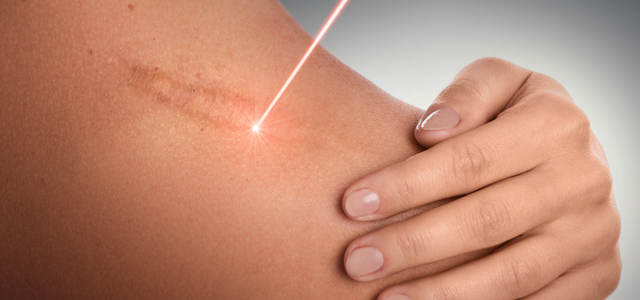SCAR REMOVAL

What is a scar?
A scar is a mark left behind on the skin due to a fibrous replacement of normal skin after some type of injury. The injury can be the result of a trauma or injury, acne, or burns. Scar formation is a natural part of the body’s healing process.
What can be done about a scar?
Each scar is different and the treatment choice should be selected on an individual basis based on age, history, scar type, and location of scar. It should also be noted that many scars fade nicely over time becoming less visible on their own. It usually takes 6 to 18 months for the natural evolution of scar healing to occur. There are several options to help minimize scars, including:
Surgical Revision: The previous scar can be excised and a new less obvious closure of the defect can be tried.
Dermabrasion: An electrical machine is used to remove the top layer of the skin resulting in a new, more even contour of the skin. This is often used for acne scarring or pock marks. The scars are not necessarily removed but can become less noticeable.
Laser treatment: The pulse dye laser is used to treat the redness of scars and can flatten a hypertrophic scar as in a keloid.
Dermal fillers: A dermal filler can be used to fill in an indented scar.
Cryotherapy: Top layer of skin is frozen off which causes blistering of the skin removing the excess scar tissue
Steroid injections: Can be used in hypertrophied scars to flatten them
Silicone containing gels/creams/bandages: Help reduce scar thickness and pain
There are many options to consider when contemplating scar removal and the best option is highly dependent on the location and type of scar and what bothers the patient most about the scar. The options should be considered with the help of a dermatologist.
References


